 This film was one of the reasons I started accumulating VHS cassettes and DVDs. When I wanted to see this some time back, I could not find it on the streaming services at all nor was it at my local video store. I realized how captive I was to these services, and I’m the sort of guy who wants to watch what he wants to watch, not just to watch something and will pick something from what’s available.
This film was one of the reasons I started accumulating VHS cassettes and DVDs. When I wanted to see this some time back, I could not find it on the streaming services at all nor was it at my local video store. I realized how captive I was to these services, and I’m the sort of guy who wants to watch what he wants to watch, not just to watch something and will pick something from what’s available.
So: It is a coming of age story set in the, what, 1950s? 1960s? The uncles fought in World War I. I think it’s the late fifties, which would have made the distant uncles almost sixty. Which is not that old, but would seem so from the perspective of a young man. At any rate, the son of a floozy gets dumped on the doorstep of the aforementioned uncles who live in a falling down house in Texas. The uncles are rumored to have a great stash of wealth on the property, and the mother thinks it would be nice if the boy ingratiated himself to the uncles and/or found the loot. The uncles are not sure what to do with him, but since he annoys the other gold-digging distant relations, they decide to keep him around.
The uncles had a previous hobby of shooting at the traveling salesmen who came onto their property having also heard the rumors of their wealth, but the boy convinces them to perhaps spend a little of that money, which leads them to some whimsical spending, including on a lion that they hope to hunt. Instead of a mankiller, though, they end up with an aging lioness retired from circus duty, which the boy then adopts and feeds.
When buying Purina Lion Chow, one of the uncles has a spell which puts him into the hospital, but he checks himself out. At a diner, they encounter four greasers whose behavior the uncle corrects, leading to them trying to brawl and knife him–but he wins against the four, even giving the knife-bearer advice on attacking with the knife and giving him the knife back to try again. He then disarms the kid again, and after beating them all, he invites them home for dinner, after which he will give them the Being a Man speech. Meanwhile, the other relations, disappointed to learn at the hospital that “He’s gone” did not mean “dead,” go to the uncles’ house, and the spoiled children release the lion accidentally, and it hides in the corn patch that the uncles, starting their life as retired gardeners, planted.
The boy follows one uncle to a secret room under the barn, where he espies a large amount of cash, some spilling out of bank bags. When the floozy returns with a man she describes as a private investigator, he tells a story that the uncles are bank robbers, so the boy should out with the loot’s location. When the boy remains loyal to the uncles, the “private detective” starts beating the boy, only to have the lion come and maul him. The floozy mom tries to take the boy away with the mauled man, but he tells her to leave him, and he does.
This is the first flashback: The story has a wrapper from a presentish day after the boy, now a man, receives a call that his uncles have died. So he is reliving the story of his raising.
The film has another flashback in the flashback, as one of the uncles tells him the story of their roving in Africa after World War I, his brother (the other uncle’s) romance with a pretty Northern African princess, and how they eventually came to steal her away from a prince–with several thousand pieces of the prince’s gold. This flashback is interwoven with the other and presents a story of how they got the money without bank robbery. At the very end, when the boy/man reviews the scene of their accident (at ninety-something, they tried to barnstorm through a barn in a biplane that they built from a kit thirty years before, they missed and hit the barn), a helicopter lands and a North African or Arab steps out–he had heard their names on the radio, and remembered stories his grandfather had told of the only men who had bested him–proving the story his uncle told was accurate.
So the film has many layers. It’s not only a coming-of-age story for the boy, but also a coming-of-a-certain-age story for the uncles who are getting middle aged and need to learn to enjoy that stage of life. So it’s got a message for young people, and a message for their parents. It’s PG, too. I watched it with my youngest, with my older boy popping in at the end to provide his sophisticated Twitch Stream Commentary. Which is unfortunate: He is at an age and mindset where he cannot take in experiences like films without feeling the need to offer his take on things, verbalizing twee things to debunk and denigrate the film as it plays. My youngest, my film buddy, has shown a little tendency towards this when his brother is around. Hopefully not too much.
Because this self-involved ironic stance is really taking a bit out of the shared cultural experience, a set of allusions and common metaphors that help bind a community.
Or maybe I’m just an old man kvetching, but I because I watched this film this week, I was able to catch the reference at At any rate, Wilder, Wealthy and Wise today:
How many firefighters will quit rather than get the jab? How many EMTs will simply walk away rather than submit to it? By my count, the number is not insignificant, and these are crucial jobs if you like keeping your house not burned up like and would like granny to get to the emergency room in some other fashion than you tossing her into the bed of the pickup after you move the Purina® Lion Chow™ out.
So much of this will go over my boys’ heads when they’re adults. Except nobody will make allusions like this in the future. The future will have all the depth of Idiocracy.
I get a little money if you click here and buy:



 I became aware of this film sometime around the turn of the century when colleagues at work talked about it. One of them is of Irish heritage, so he probably felt some affinity for this film, which is a story of Irish brother vigilantes in Boston taking on various mobs in their amateur fashion while being pursued, and then aided, by an FBI agent played by Willem Dafoe. But then the local capo arranges the parole of an extreme hit man to track down and eliminate the boys.
I became aware of this film sometime around the turn of the century when colleagues at work talked about it. One of them is of Irish heritage, so he probably felt some affinity for this film, which is a story of Irish brother vigilantes in Boston taking on various mobs in their amateur fashion while being pursued, and then aided, by an FBI agent played by Willem Dafoe. But then the local capo arranges the parole of an extreme hit man to track down and eliminate the boys.  One of my Christmas gifts was a gift card to Vintage Stock, a retailer in used movies, video games, CDs, movies, and records. So sometime right around the turn of the year, I went over to Vintage Stock to spend it, and I amassed a number of movies and DVDs, including this one. It was my lucky day, too, as I made my first (and only) stop to the new comic book shop on Campbell, right across the city from the now-closed Nameless City Games. And although Nameless City did not have the first issue of the Sarah Hoyt Barbarella
One of my Christmas gifts was a gift card to Vintage Stock, a retailer in used movies, video games, CDs, movies, and records. So sometime right around the turn of the year, I went over to Vintage Stock to spend it, and I amassed a number of movies and DVDs, including this one. It was my lucky day, too, as I made my first (and only) stop to the new comic book shop on Campbell, right across the city from the now-closed Nameless City Games. And although Nameless City did not have the first issue of the Sarah Hoyt Barbarella 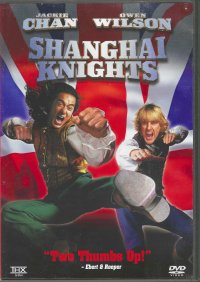 In 2000, or a little before, someone thought, “Hey, what if we remade
In 2000, or a little before, someone thought, “Hey, what if we remade 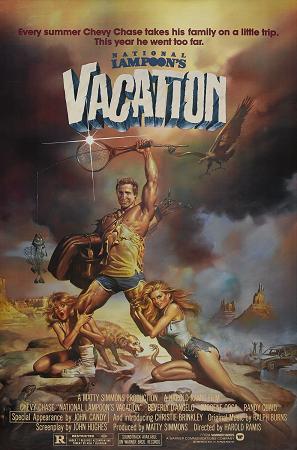 As you know, gentle reader, I think this is
As you know, gentle reader, I think this is  I bought this book, along with
I bought this book, along with 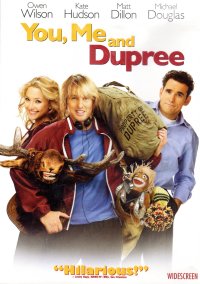 This is the second Owen Wilson film in a row that we’ve seen–the first being
This is the second Owen Wilson film in a row that we’ve seen–the first being  I saw this film in the theaters with my beautiful wife back in the heady days of the Stillerverse and back when we went to the theater a couple of times a year. This film is a lesser entry in the set starring Stiller, Vince Vaughn, and/or Owen and/or Luke Wilson–Zoolander, Dodgeball, and Mystery Men are better. As a matter of fact, my wife said that we did not see this in the theaters, or that she did not remember it, and all the way up to the climax, she did not–but when we got to the end, where Stiller is dressed up like an aging Jersey Shore resident saying, “Do it,” in a deep voice–ah, then she remembered it.
I saw this film in the theaters with my beautiful wife back in the heady days of the Stillerverse and back when we went to the theater a couple of times a year. This film is a lesser entry in the set starring Stiller, Vince Vaughn, and/or Owen and/or Luke Wilson–Zoolander, Dodgeball, and Mystery Men are better. As a matter of fact, my wife said that we did not see this in the theaters, or that she did not remember it, and all the way up to the climax, she did not–but when we got to the end, where Stiller is dressed up like an aging Jersey Shore resident saying, “Do it,” in a deep voice–ah, then she remembered it. You know, these films were released in the same year. It’s crazy, because the aesthetics of each differ so wildly.
You know, these films were released in the same year. It’s crazy, because the aesthetics of each differ so wildly. 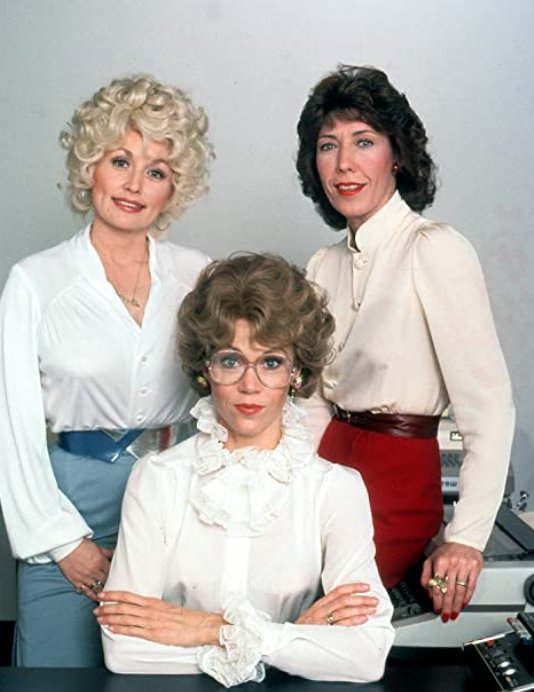
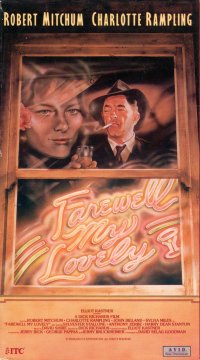 It had been a long time since I watched this film. How long? I don’t remember, but I do remember going through the later film renditions of Raymond Chandler’s works, including
It had been a long time since I watched this film. How long? I don’t remember, but I do remember going through the later film renditions of Raymond Chandler’s works, including  I put a Christmas tree up on November 1 (well, our Trunk or Treat this year was a Christmas-decorated trunk, one of three that showed up at our church this year, so I moved the little Christmas tree from the trunk to the parlor). So of course it’s not too early for a Christmas movie at Nogglestead.
I put a Christmas tree up on November 1 (well, our Trunk or Treat this year was a Christmas-decorated trunk, one of three that showed up at our church this year, so I moved the little Christmas tree from the trunk to the parlor). So of course it’s not too early for a Christmas movie at Nogglestead.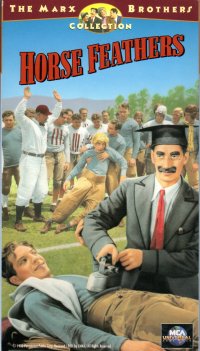
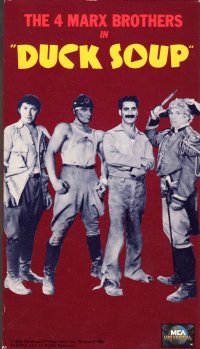 You know, the films both come from genres that would be recognizeable today. Horse Feathers is a college comedy, not unlike Animal House, Van Wilder, PCU, or other entries in the genre (including the Bing Crosby film High Times which I did not finish in two tries–but that was recorded digitally from cable–if I had the videocassette, I would no doubt finish it). Groucho Marx gets appointed to be the head of a university, and it’s a bit fish out of water as he tries to get star players to join his university’s football team for a game against their rivals (so it’s also got a sports angle like Necessary Roughness). Chico and Harpo play dimwits who vacillate between the factions; Zeppo plays a smooth guy, and Groucho, of course, plays Groucho.
You know, the films both come from genres that would be recognizeable today. Horse Feathers is a college comedy, not unlike Animal House, Van Wilder, PCU, or other entries in the genre (including the Bing Crosby film High Times which I did not finish in two tries–but that was recorded digitally from cable–if I had the videocassette, I would no doubt finish it). Groucho Marx gets appointed to be the head of a university, and it’s a bit fish out of water as he tries to get star players to join his university’s football team for a game against their rivals (so it’s also got a sports angle like Necessary Roughness). Chico and Harpo play dimwits who vacillate between the factions; Zeppo plays a smooth guy, and Groucho, of course, plays Groucho. This film was one of the reasons I started accumulating VHS cassettes and DVDs. When I wanted to see this some time back, I could not find it on the streaming services at all nor was it at my local video store. I realized how captive I was to these services, and I’m the sort of guy who wants to watch what he wants to watch, not just to watch something and will pick something from what’s available.
This film was one of the reasons I started accumulating VHS cassettes and DVDs. When I wanted to see this some time back, I could not find it on the streaming services at all nor was it at my local video store. I realized how captive I was to these services, and I’m the sort of guy who wants to watch what he wants to watch, not just to watch something and will pick something from what’s available.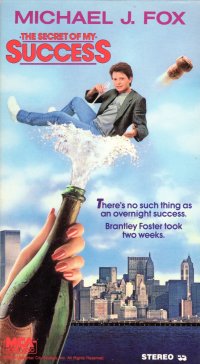 Gentle reader, I must have gotten this videocassette when it was new, probably purchased in 1990 or 1991 at the Suncoast Video at the now shuttered Northridge Mall in Milwaukee on one of those Friday nights when I would cash my grocery store paycheck right there at the store and then hope on the #67 bus to blow all that (not much) cash at the mall.
Gentle reader, I must have gotten this videocassette when it was new, probably purchased in 1990 or 1991 at the Suncoast Video at the now shuttered Northridge Mall in Milwaukee on one of those Friday nights when I would cash my grocery store paycheck right there at the store and then hope on the #67 bus to blow all that (not much) cash at the mall.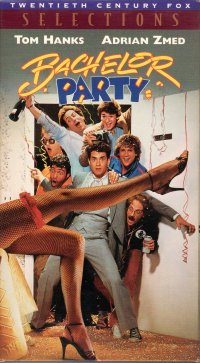 I picked this film up recently at a garage sale or thrift store as I accumulate films on media because they’re about to disappear–I see that this film is not available on Amazon Prime in my location, perhaps because I’m in the buckle of the Bible belt.
I picked this film up recently at a garage sale or thrift store as I accumulate films on media because they’re about to disappear–I see that this film is not available on Amazon Prime in my location, perhaps because I’m in the buckle of the Bible belt.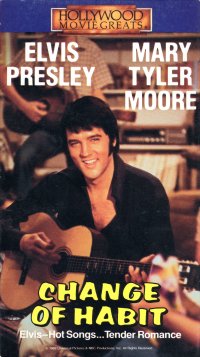 You know, I want to think that I bought this particular videocassette for my mother when I was in late middle school or high school for Christmas or her birthday. It would have been one of the bargain videotapes. The thing is, the film would only have been, what, sixteen or seventeen years old at the time? That would have been thirty-some years ago. More time has passed between the gift of the film and now than the film and the gift. And it seemed like an old movie at the time. Kind of like you can probably find segments of the population that think of the Lord of the Rings movies as old these days. You know what we call them: Damn kids.
You know, I want to think that I bought this particular videocassette for my mother when I was in late middle school or high school for Christmas or her birthday. It would have been one of the bargain videotapes. The thing is, the film would only have been, what, sixteen or seventeen years old at the time? That would have been thirty-some years ago. More time has passed between the gift of the film and now than the film and the gift. And it seemed like an old movie at the time. Kind of like you can probably find segments of the population that think of the Lord of the Rings movies as old these days. You know what we call them: Damn kids. I had seen The Godfather before–my mother-in-law bought it for me one Christmas, probably hoping it would butch me up to be worthy of her beautiful daughter, and I got around to watching it some years ago. But I recently came upon the whole Godfather collection in a VHS box set with the two cassette per movie thing–what is this, laser disc? I have to stop and change the media? But I watched the films not quite back to back–sometimes not in one sitting–as my family had various excursions through the end of the summer. Once the summer vacation came to an end, though, gentle reader, movie time came screeching to a halt. Also, during this interim, the lamp on our projection television conked out, which meant I was without a home entertainment center for a week or so until replacement lamps arrived. So I got through two and three quarter movies but had to wait until this weekend to finish the set.
I had seen The Godfather before–my mother-in-law bought it for me one Christmas, probably hoping it would butch me up to be worthy of her beautiful daughter, and I got around to watching it some years ago. But I recently came upon the whole Godfather collection in a VHS box set with the two cassette per movie thing–what is this, laser disc? I have to stop and change the media? But I watched the films not quite back to back–sometimes not in one sitting–as my family had various excursions through the end of the summer. Once the summer vacation came to an end, though, gentle reader, movie time came screeching to a halt. Also, during this interim, the lamp on our projection television conked out, which meant I was without a home entertainment center for a week or so until replacement lamps arrived. So I got through two and three quarter movies but had to wait until this weekend to finish the set. On Friday, I took both my children to the bowling alley. We took the back-up truck, which I generally treat as a pickup most of the time, with both of the seats folded down. So to transport the two boys, one of them unfolds the back seat, which leaves one up and one down. As we reached the end of the driveway, I told the oldest son that I was going to play the Labyrinth game with the bowling ball in the back, trying to take turns and accelerate so that the ball rolled up over the other seat, still folded down, and into his lap.
On Friday, I took both my children to the bowling alley. We took the back-up truck, which I generally treat as a pickup most of the time, with both of the seats folded down. So to transport the two boys, one of them unfolds the back seat, which leaves one up and one down. As we reached the end of the driveway, I told the oldest son that I was going to play the Labyrinth game with the bowling ball in the back, trying to take turns and accelerate so that the ball rolled up over the other seat, still folded down, and into his lap.
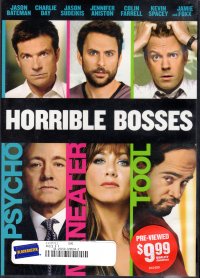 It’s funny; this film came a year after
It’s funny; this film came a year after